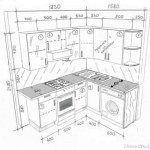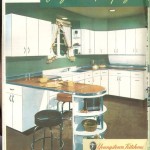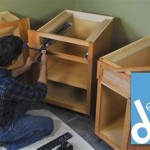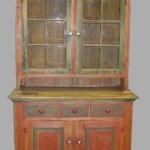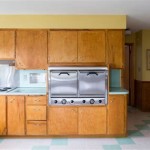How To Organize Kitchen Cabinets On a Budget
Kitchen cabinet organization can feel like a daunting task, particularly when financial resources are limited. However, a well-organized kitchen can significantly improve efficiency during meal preparation, reduce food waste, and create a more pleasant environment. Effectively managing kitchen cabinets on a budget requires planning, resourcefulness, and a willingness to implement simple, yet impactful, strategies. This article will outline several key steps to achieving an organized kitchen without excessive spending.
1. Initial Assessment and Decluttering
The first step in budget-friendly kitchen cabinet organization is a thorough assessment of the existing contents and a decluttering process. This involves removing everything from the cabinets and evaluating each item individually. It is crucial to be objective during this process to avoid keeping items that are no longer useful.
Begin by creating designated zones for sorting. These could include categories such as “Keep,” “Donate,” “Discard,” and “Relocate.” Place items into these zones as you remove them from the cabinets. When evaluating an item, consider the following factors:
Frequency of Use:
Has the item been used in the past year? If not, its value may be questionable.Duplication:
Are there multiple items serving the same purpose? Consider keeping the best quality or the one that is most frequently used.Condition:
Is the item damaged, broken, or significantly deteriorated? If so, discarding it is likely the best option.Sentimentality:
While sentimental items have value, consider whether they are truly necessary for a functional kitchen cabinet. If an item holds sentimental value but is not practical, consider storing it elsewhere or taking a photograph of it for remembrance.
Once all items have been sorted, address each zone. Items designated for donation should be taken to a local charity or donation center. Discarded items should be disposed of responsibly, considering recycling options whenever possible. Relocated items should be moved to their appropriate storage locations outside of the kitchen cabinets. Finally, the "Keep" zone represents the items that will be organized within the cabinets.
Clean the empty cabinets thoroughly before proceeding with organization. This includes wiping down shelves and drawers, removing crumbs or spills, and addressing any lingering odors. A simple solution of warm water and dish soap is often sufficient for cleaning. For stubborn stains, a paste of baking soda and water can be effective. Ensuring that the cabinets are clean provides a fresh start for the organization process.
2. Strategic Planning and Zone Allocation
After decluttering and cleaning, the next step is to plan the organization strategy and allocate zones within the cabinets. This involves considering the layout of the kitchen, the frequency of use of different items, and the available space within each cabinet. A well-planned organization strategy maximizes efficiency and minimizes clutter.
Start by identifying different zones based on function. Common zones include:
Food Preparation Zone:
This zone should house items frequently used during meal preparation, such as mixing bowls, measuring cups, utensils, and spices.Cooking Zone:
This zone should house pots, pans, baking sheets, and other items used for cooking. Consider proximity to the stovetop and oven when allocating space for this zone.Dishware Zone:
This zone is dedicated to plates, bowls, cups, and glasses. It should be located near the dishwasher or sink for easy access.Pantry Zone:
This zone should be dedicated to non-perishable food items, such as canned goods, pasta, rice, and snacks.Cleaning Supplies Zone:
This zone should house cleaning products, such as dish soap, sponges, and cleaning cloths. Ensure that these items are stored separately from food items to prevent contamination.
Within each zone, consider the frequency of use of individual items. Items that are used frequently should be placed in easy-to-reach locations, while items that are used less frequently can be stored in higher or lower cabinets. For example, everyday dishes should be stored at eye level, while holiday dishes can be stored on a higher shelf. Consider also ease of access; the heaviest items should be stored lower to avoid straining when retrieving them.
Maximize vertical space within cabinets by using shelf dividers or risers. These inexpensive organizers can create additional levels within a cabinet, allowing for more efficient storage. Adjustable shelves offer increased flexibility, allowing users to customize the space to fit their needs. Consider moving shelves as needed to best accommodate the items within the cabinet.
Use clear containers to store dry goods such as flour, sugar, pasta, and rice. Clear containers allow for easy identification of the contents and prevent spills. They also help to keep food fresh and prevent pantry pests. Repurposing existing containers, such as empty jars or plastic tubs, is a cost-effective alternative to purchasing new containers.
3. Implementing Budget-Friendly Organizing Solutions
Implementing the organization plan requires utilizing affordable organizing solutions to maximize space and improve accessibility. A variety of low-cost options are available to effectively organize kitchen cabinets without breaking the bank. Focus on multi-functional items and repurposing what you already have.
Utilize dollar store finds. Dollar stores often offer a wide variety of organizing products at affordable prices. These may include:
Plastic Bins and Baskets:
These can be used to group similar items together and prevent clutter.Shelf Liners:
These can protect cabinet shelves from spills and stains.Command Hooks:
These can be used to hang pot holders, dish towels, or other lightweight items on the inside of cabinet doors.Drawer Organizers:
These can be used to separate utensils, cutlery, or other small items within drawers.
Repurpose existing items for storage. Many items already present in the home can be repurposed for kitchen cabinet organization. Examples include:
Empty Food Containers:
Empty jars, cans, or plastic tubs can be used to store dry goods or small kitchen items.Shoe Boxes:
Shoe boxes can be used to store cookbooks, cleaning supplies, or other items.Magazine Holders:
Magazine holders can be used to store cutting boards, baking sheets, or pot lids.
Construct DIY organizers from inexpensive materials. Simple organizers can be created using materials such as cardboard, wood, or PVC pipes. For example, a cardboard box can be transformed into a drawer divider by cutting it into smaller sections and securing them together with tape or glue. PVC pipes can be cut into smaller sections and used as organizers for pot lids or baking sheets.
Utilize vertical space effectively. Hanging organizers can be used to maximize vertical space and free up cabinet space. Examples include:
Over-the-Door Organizers:
These organizers can be hung on the inside of cabinet doors to store spices, cleaning supplies, or other small items.Hanging Baskets:
These baskets can be hung from shelves or cabinet interiors to store produce, snacks, or other items.
Minimize countertop clutter by storing items in cabinets whenever possible. Countertop clutter can make a kitchen feel disorganized and cramped. By storing items in cabinets, countertops can be kept clear and functional. Consider storing small appliances, such as toasters or blenders, in cabinets when they are not in use.
Regular maintenance is crucial to maintaining an organized kitchen. Set aside a few minutes each week to tidy up the cabinets, remove any unwanted items, and reorganize as needed. This will prevent clutter from accumulating and ensure that the kitchen remains functional and organized. Periodically reassess the organization strategy and make adjustments as necessary to accommodate changing needs.
Utilize door space. The inside of cabinet doors often goes unused. Install hooks or small shelves on the inside of doors to store spices, measuring cups, pot lids, or cleaning supplies. This maximizes space and puts frequently used items within easy reach. Adhesive hooks are a non-invasive option that can be easily removed without damaging the cabinet.
Group similar items together. Consolidate all spices in one location, baking supplies in another, and canned goods in a separate area. This makes it easier to find what you need and prevents duplicate purchases. Label bins and containers to further enhance organization and clarity.
Rotate stock regularly. Practice the "first in, first out" (FIFO) method for pantry items. This means placing newer items in the back and older items in the front, ensuring that older items are used before they expire. This reduces food waste and keeps your pantry organized.
Avoid overpacking. Overcrowded cabinets are difficult to navigate and can lead to items being forgotten or wasted. Leave some space in each cabinet to allow for easy access and prevent damage to items. Resist the urge to fill every available space, and regularly declutter to remove unwanted items.
Consider lighting. If the cabinets are dark, consider adding battery-operated LED lights to illuminate the contents. This makes it easier to find what you need, especially in lower cabinets. LED strip lights are a budget-friendly option that can be easily installed.
By following these strategies, it is possible to effectively organize kitchen cabinets on a budget, creating a more functional and enjoyable cooking space. Remember that the key to success is planning, decluttering, and utilizing affordable organizing solutions.

40 Easy Ways To Organize Your Kitchen On A Budget In 2024

150 Diy Kitchen Organization Ideas Prudent Penny Pincher

Kitchen Cabinet Organizers 11 Free Diy Ideas Bob Vila

Kitchen Cabinet Organizers 11 Free Diy Ideas Bob Vila

Kitchen Cabinet Organizers 11 Free Diy Ideas Bob Vila

10 Easy Kitchen Organization Ideas 2024 Budget Friendly S

41 Genius Kitchen Organization Ideas The Family Handyman

Small Kitchen Organisation On Budget Designcafe

Pin On Kitchen

30 Kitchen Cabinet Add Ons You Can Diy Family Handyman

